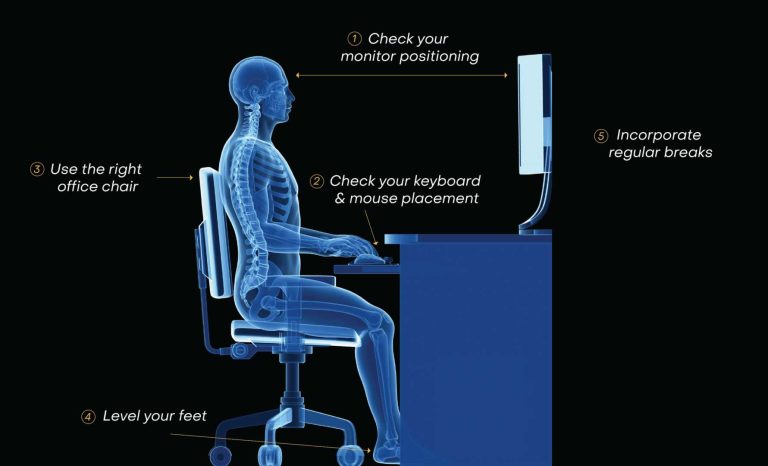Dual monitors can transform your gaming setup by providing an expansive view and multitasking capabilities that single screens simply can’t match. Curious about how they actually work to enhance your gaming experience? The quick answer is that dual monitors connect to your computer via multiple video outputs, allowing you to extend your desktop across two screens, giving you more room for game visuals, maps, or streaming controls. When set up correctly, games can span seamlessly across both screens, or you can use one for gameplay and the other for chat, guides, or recording tools. It’s like having a mini command center right next to your game, making everything more immersive and efficient. Now, let’s dive into how this setup actually functions and tips to get the most out of your dual gaming screens.
How Do Dual Monitors Work for Gaming?
Understanding the Basics of Dual Monitors
Dual monitors involve connecting two screens to a single computer, allowing for expanded workspace. When used for gaming, this setup can provide a more immersive experience and enhance multitasking abilities. The key is understanding how the graphics card and system work together to handle two displays effectively.
The graphics card, also called the GPU, sends video signals to both monitors. Modern GPUs support multiple outputs, making connecting and managing two screens a straightforward process. The operating system then extends or duplicates the display, depending on how you set it up.
How Graphics Cards Support Dual Monitors
Most gaming-grade graphics cards support dual monitor setups natively. These cards come with multiple display outputs such as HDMI, DisplayPort, or DVI. The number of outputs determines how many monitors you can connect simultaneously.
High-end GPUs can support three or more monitors, offering wider viewing angles and increased productivity. When connecting dual monitors, ensure your GPU has enough bandwidth to handle both screens at the desired resolution and refresh rate.
Types of GPU Connections for Dual Monitors
- HDMI: Common and widely supported, supports high-definition video and audio.
- DisplayPort: Offers higher bandwidth, ideal for higher resolutions and refresh rates.
- DVI: Older connection type, suitable for lower resolutions.
Choosing the right ports depends on your monitors’ compatibility and your desired display quality.
Configuring Dual Monitors for Gaming
Once connected, you need to configure your system. Windows and other operating systems provide display settings to extend, duplicate, or choose primary displays. For gaming, extending the display is usually preferred to maximize the viewing area.
To set up, right-click on your desktop, select display settings, and choose the option to extend the desktop across both monitors. Arrange the monitors physically and within settings to match your actual setup.
Adjusting Display Resolution and Refresh Rate
Optimizing resolution and refresh rate is critical for smooth gaming. Higher resolutions like 1440p or 4K provide clearer images, but demand more from your GPU. To ensure fluid gameplay:
- Set each monitor’s resolution to its native value.
- Adjust refresh rate to match the monitor’s maximum (60Hz, 120Hz, 144Hz, etc.).
- Test settings with your favorite games for the best balance of quality and performance.
Achieving the right configuration improves visual clarity and reduces lag or tearing.
Benefits of Dual Monitors in Gaming
Using two monitors offers several advantages:
- Enhanced Immersion: Wide viewing angles create a more engaging gaming environment.
- Multitasking: Keep chat windows, game guides, or streaming controls open on one screen while gaming on the other.
- Better Situational Awareness: In competitive games, viewing maps or inventory on a second screen can improve reaction times.
The setup is especially popular in simulation, racing, and first-person shooter games.
Types of Dual Monitor Gaming Setups
Different configurations suit various gaming preferences:
Horizontal Side-by-Side Setup
Monitors are placed next to each other horizontally, creating a panoramic view. This setup is common for simulation and open-world games.
Ultra-Wide Monitor with Additional Screen
A single ultra-wide monitor paired with a secondary monitor offers a seamless experience. The ultra-wide acts as one expansive display, while the second monitor handles chat or streaming controls.
Stacked Monitors
One monitor is placed above the other, providing a tall, multi-layered view. This setup is less common but useful for certain flight simulators or specific genres.
Performance Considerations for Gaming with Dual Monitors
Running games across two screens demands more from your GPU and CPU.
To ensure smooth performance:
- Use a GPU with sufficient VRAM to handle higher resolutions and multiple outputs.
- Adjust in-game graphics settings to lower levels if experiencing lag.
- Keep your drivers up to date for optimal compatibility and performance.
Monitor your system’s temperature and ensure adequate power supply to prevent overheating or crashes.
Potential Challenges and How to Fix Them
While dual monitors can enhance gaming, they also pose challenges:
Screen Tearing
This occurs when the GPU’s frame rate doesn’t sync with monitor refresh rates. Enable V-Sync or G-Sync/FreeSync technology to fix this.
Performance Drop
Running two high-resolution displays can reduce frame rates. Lowering graphics quality or upgrading your GPU helps maintain performance.
Display Alignment and Bezels
Physical bezels between monitors can cause visual interruption. Adjust monitor angles or use curved ultra-wide screens for a seamless experience.
Additional Tips for an Optimal Dual Monitor Gaming Experience
- Use display calibration tools to ensure color accuracy across screens.
- Disable display scaling if texts or icons appear blurry.
- Organize your desktop icons and shortcuts for easier multitasking.
- Consider mounting options to position monitors ergonomically.
Proper setup and management can make your dual monitor gaming journey much more enjoyable.
Related Topics for Dual Monitors in Gaming
Using Dual Monitors for Streaming and Recording
Streamers often use one monitor for gameplay and another for chat, alerts, and streaming controls. This setup simplifies management and improves the streaming experience.
Choosing the Best Monitors for Gaming
Select monitors with high refresh rates, low response times, and good color accuracy. Also, consider the size and aspect ratio for your preferred gaming genres.
Impact on Gaming Performance
Dual monitors can add visual richness but may require upgrading your hardware. Balance your system’s specs with your gaming needs to prevent bottlenecks.
Summary
Using dual monitors for gaming opens up new possibilities for immersive experiences and multitasking. Ensuring your system is compatible, properly configured, and optimized will give you the best results. With the right setup, you can enjoy wider views, better control, and more engaging gameplay sessions.
How To Connect Two Monitors To One Computer – 30 Second Guide
Frequently Asked Questions
How does connecting two monitors affect game performance?
Connecting two monitors can impact game performance based on your system’s graphics capabilities. If your graphics card supports multi-display setups efficiently, you might see minimal to no performance loss. However, rendering images for two screens requires more GPU resources, which can occasionally lead to lower frame rates or increased latency if your hardware isn’t equipped to handle the load. Adjusting in-game settings and ensuring your graphics drivers are up to date can help maintain smooth gameplay on dual monitors.
Can I play different games on each monitor simultaneously?
Yes, you can run different applications or games on each monitor at the same time, provided your operating system and graphics card support this feature. Many modern graphics cards allow for independent display outputs, enabling you to multitask by playing one game on one screen while browsing or streaming content on the other. To do this efficiently, verify your graphics setup and configure the display settings to assign each monitor to a specific application.
What setup is necessary to ensure seamless gaming across dual monitors?
To achieve seamless gaming on dual monitors, you need a compatible graphics card with multiple output ports, appropriate display cables, and proper configuration of display settings. Make sure both monitors are calibrated correctly with the same resolution and refresh rate to prevent visual inconsistencies. Additionally, adjusting in-game settings to span across both screens and verifying that your system’s GPU can handle the extended display environment will help deliver a smooth gaming experience.
How does a dual monitor setup impact in-game visuals and immersion?
A dual monitor setup provides a wider field of view, which can significantly improve visual immersion and situational awareness in games. Players can enjoy panoramic views, track enemies more easily, and access multiple in-game interfaces without distraction. However, some games might require specific settings adjustments to optimize multi-monitor display, ensuring that visuals remain clear and aligned across both screens for a cohesive experience.
Final Thoughts
Dual monitors work for gaming by expanding your display area, allowing you to run multiple applications or view game details simultaneously. The setup requires a compatible graphics card with multiple video outputs and proper configuration in your system settings. Many gamers use one screen for gameplay and the other for chat, guides, or monitoring tools.
Overall, how do dual monitors work for gaming? They enhance your experience by providing more space and multitasking capabilities, making gameplay more immersive and efficient.
I’m passionate about hardware, especially laptops, monitors, and home office gear. I share reviews and practical advice to help readers choose the right devices and get the best performance.






